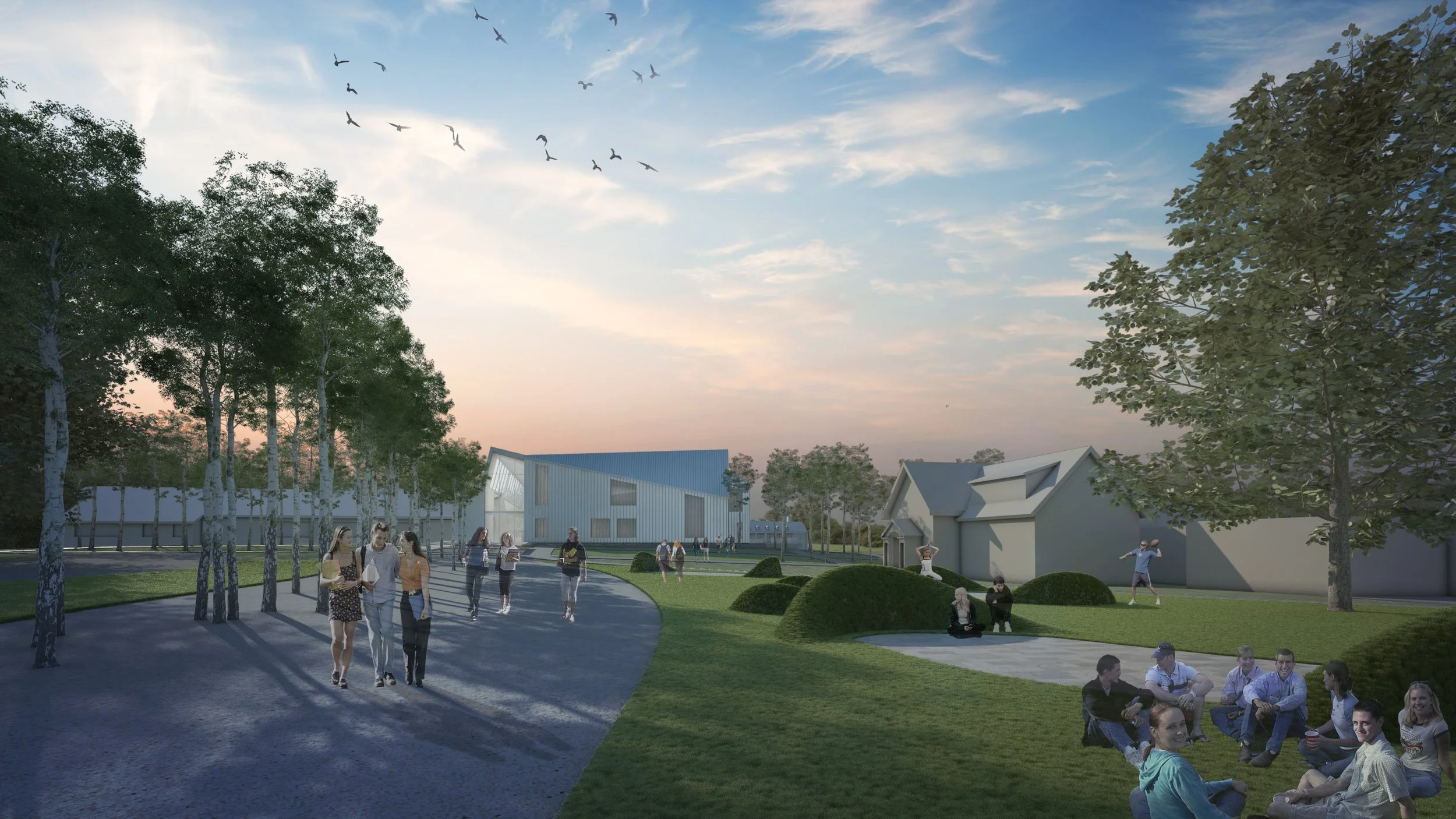Accessible Architecture: Designing Spaces for All
In the realm of architecture, the concept of accessibility has evolved from being an afterthought to a fundamental principle that underpins the design of spaces. Accessibility refers to the extent to which buildings, structures, and environments are designed to be usable by people of all abilities, including those with physical disabilities, sensory impairments, and mobility challenges.
While prioritizing accessibility in building design, it's important to acknowledge that the scope of disabilities and design considerations spans a broad spectrum. Let's delve into some key types of accessible designs in architecture that contribute to a more inclusive built environment.
Accessible Building Design: Prioritize Empathy + Understanding
The spectrum of disabilities encompasses an array of conditions that can affect mobility, sensory perception, cognitive function, and more. From physical impairments such as mobility limitations or wheelchair dependence to sensory challenges like visual or auditory impairments, each disability presents unique requirements that must be integrated into the design process.
Furthermore, invisible disabilities like chronic pain, cognitive disorders, and mental health conditions add an additional layer of complexity, demanding consideration beyond conventional architectural norms.
In embracing this broad spectrum, architects and designers must first adopt a mindset of empathy and understanding. This understanding lays the foundation for design decisions that go beyond mere compliance and instead focus on creating environments that facilitate meaningful engagement for everyone.
Considerations When Designing Accessible Buildings + Spaces
Universal Design Approach
Universal design is a philosophy that advocates for the creation of environments that can be used and enjoyed by everyone, regardless of age, ability, or status. Instead of retrofitting spaces to accommodate specific needs, universal design integrates accessibility features seamlessly into the initial design.
This approach minimizes the need for modifications in the future. An example of universal design is the installation of ramps alongside stairs, providing an alternative means of entry that benefits not only individuals with mobility impairments but also parents with strollers and travelers with luggage.
Visual and Auditory Accessibility
To cater to individuals with visual impairments, architecture incorporates various features such as Braille signage, tactile maps, and audible cues. These elements enhance wayfinding and communication. Additionally, spaces are designed to minimize glare and ensure proper lighting to aid those with low vision.
Similarly, for individuals with hearing impairments, auditory accessibility is crucial. This involves designing spaces with optimal acoustics, visual alarms, and assistive listening systems. In larger public areas like auditoriums, sign language interpretation services may be provided to ensure effective communication.
Sensory Considerations
Certain designs take into account sensory sensitivities, particularly for individuals on the autism spectrum or those with sensory processing disorders. Calming and well-balanced color schemes, as well as the integration of quiet spaces, help create a more comfortable environment. Minimizing excessive visual stimuli and using natural materials can also contribute to a sensory-friendly design.
Wayfinding and Signage
Accessible wayfinding is essential for enabling smooth navigation within any space. Clear signage with high contrast and easily readable fonts benefit individuals with visual impairments. Additionally, incorporating tactile signs and auditory cues ensure that people with various needs can effectively orient themselves within a space.
Inclusive Restrooms
Restroom facilities are a critical aspect of accessibility. Designing restrooms that cater to diverse needs includes providing accessible stalls equipped with grab bars, proper turning spaces for wheelchairs, and other features for those with cognitive and physical impairments.
Adaptive Reuse of Spaces
Incorporating accessible design isn't limited to new construction; it also extends to the adaptive reuse of existing spaces. Historical buildings and structures can be retrofitted with accessible features without compromising their architectural integrity. This allows for the preservation of cultural heritage while ensuring equal access for all.
Outdoor Accessibility
Accessibility considerations aren't confined to indoor spaces alone. Public parks, recreational areas, and outdoor pathways are designed to accommodate individuals with mobility challenges. This involves creating accessible pathways, providing seating at regular intervals, and ensuring that outdoor amenities like picnic areas and viewpoints are reachable by everyone.
The Role of Technology In Accessible Building Design
Technology is a powerful tool that can revolutionize accessibility in architecture. Building Information Modeling (BIM) software enables architects to visualize the entire design process, facilitating the identification and rectification of potential accessibility barriers before construction even begins.
Virtual reality (VR) and augmented reality (AR) technologies allow designers to immerse themselves in virtual environments, experiencing firsthand the challenges that individuals with disabilities might face. This not only enhances the design process but also nurtures a deeper understanding of accessibility considerations.
Improving Building Experiences for All with Accessible Building Design
Accessible architecture and building design is an embodiment of the principle that spaces should be inclusive and welcoming to all individuals, regardless of their physical abilities. The types of accessible designs discussed above represent a commitment to breaking down barriers and fostering a more inclusive society.
By embracing universal design principles, integrating thoughtful features, and considering the diverse needs of people, architects have the power to shape environments that celebrate the richness of human diversity and ensure that everyone can fully participate in and enjoy the built environment.


